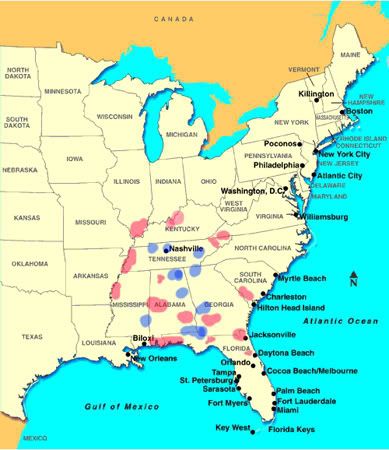propwins
Senior Member
from today's NY Times:
Two separate teams of researchers studying the genes of coyotes in the Northeast reported evidence that these animals that have for decades upon decades been thought of as coyotes are in fact coyote-wolf hybrids.
The team headed by Roland W. Kays, curator of mammals at the New York State Museum, studied coyotes from New Jersey to Maine. Jonathan Way, wildlife biologist with the Eastern Coyote Research consulting firm, and colleagues examined coyotes around Cape Cod and Boston. Both teams found that the animals carry wolf and coyote DNA. The paper by Dr. Kays and his colleagues was published in Biology Letters; the paper by Dr. Way and his colleagues was published in Northeastern Naturalist.
Based on the wolf DNA found in the Eastern coyotes, Dr. Kays and colleagues hypothesize in their paper that Western coyotes dispersing eastward north of the Great Lakes across Canada during the last century mated with wolves along the way, bringing that wolf DNA along with them to the Northeast.
The findings may explain why coyotes in the East are generally larger than their Western counterparts — that is, more wolflike in size — and why they are so much more varied in coat color, as might be expected from a creature with a more diverse genome. It may also explain why Eastern coyotes appear to be more adept as deer hunters than their Western forebears, which tend toward smaller prey, like voles and rabbits.

Two separate teams of researchers studying the genes of coyotes in the Northeast reported evidence that these animals that have for decades upon decades been thought of as coyotes are in fact coyote-wolf hybrids.
The team headed by Roland W. Kays, curator of mammals at the New York State Museum, studied coyotes from New Jersey to Maine. Jonathan Way, wildlife biologist with the Eastern Coyote Research consulting firm, and colleagues examined coyotes around Cape Cod and Boston. Both teams found that the animals carry wolf and coyote DNA. The paper by Dr. Kays and his colleagues was published in Biology Letters; the paper by Dr. Way and his colleagues was published in Northeastern Naturalist.
Based on the wolf DNA found in the Eastern coyotes, Dr. Kays and colleagues hypothesize in their paper that Western coyotes dispersing eastward north of the Great Lakes across Canada during the last century mated with wolves along the way, bringing that wolf DNA along with them to the Northeast.
The findings may explain why coyotes in the East are generally larger than their Western counterparts — that is, more wolflike in size — and why they are so much more varied in coat color, as might be expected from a creature with a more diverse genome. It may also explain why Eastern coyotes appear to be more adept as deer hunters than their Western forebears, which tend toward smaller prey, like voles and rabbits.


